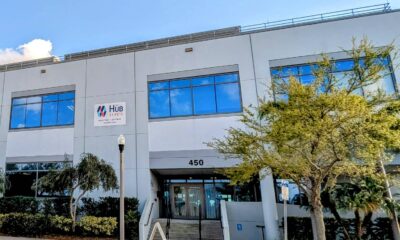Study to highlight urgent need for investment in resilience infrastructure
The Tampa Bay Partnership is using a $250,000 grant from JPMorgan Chase & Co. to fund a nearly year-long study that aspires to convince the region’s business community of the need to invest today in critical infrastructure projects that could help mitigate the potentially devastating economic effects of sea level rise in the future.
According to research done by the National Oceanic and Atmospheric Administration, Tampa Bay is staring down a 2.7-foot sea level rise between now and 2070, Tampa Bay Partnership CEO Rick Homans told the Catalyst. If major upgrades to the area’s berms, seawalls, bridges and other critical infrastructure aren’t done, economic drivers like MacDill Air Force Base, Tampa International Airport and Pinellas County’s entire coastal, beach-driven economy could be threatened.
“Some areas are high enough, certainly, and wouldn’t see much impact,” Homans said. “But a lot of areas of Tampa Bay appear to be at risk. Our major downtowns, they’re basically at sea level or near sea level. It’s important to understand their ability to handle the elevation of the water.”
The study, called “The Business Case for Resilience,” should be completed in September, at which time reports and recommendations will be issued. Homans said local governments have gotten the message, as evidenced by the way that the Tampa Bay Regional Planning Council — a consortium of six counties and more than 20 municipalities that, in a 2017 study, projected a $162 billion impact to the area’s gross regional product if the region takes no action to mitigate the impact of sea level rise — has embraced resiliency as a key issue. But the private sector has not, on balance, been as responsive.

Tampa Bay Partnership President and CEO Rick Homans. Photo by Brian Hartz.
“Our initial thought was that the business community needed to pay more attention to this issue,” Homans said, “and to understand the existential threat that sea level rise could pose to our region and our economy. It could get pretty serious pretty quickly. My sense from meetings that I had been attending was that there was not a great deal of awareness or concern about this issue on the part of business leaders, whereas we are seeing a much higher level of concern and activity amongst the public sector.”
Homans pointed out that the scenarios the study is examining are not based on a once-in-a-generation, catastrophic hurricane, but rather the more mundane, routine and predictable king tides that occur a few times per year and cause flooding unrelated to storms. Every year, he said, there’s a decent chance, around 10 percent, that a king tide will coincide with a tropical weather event.
“This is not looking at [the consequences of] a Category 5 hurricane hitting Tampa Bay,” Homans said. “This is what we experience in our regular, normal life in our interaction with the sea.”
Investments in resiliency infrastructure would not only help head off and mitigate future negative economic effects, Homans said, but they would also “create jobs and opportunity around the work that needs to be done.”
So far, the message seems to be resonating. The study has gotten buy-in from major organizations like the Tampa Bay Rays, whose president, Brian Auld, is chairing the Tampa Bay Partnership task force that’s overseeing “The Business Case for Resilience” initiative.
“Rising sea levels pose a threat to most coastal communities, and experts point to Tampa Bay as being one of the most vulnerable,” Auld said in a news release. “This study will begin to show us what we need to do to protect our homes, our businesses and our tax base so we can continue to grow in the decades to come.”
JPMorgan Chase Vice President of Global Philanthropy Maria Escorcia added, via the release, “We’re pleased to support the Tampa Bay Partnership as it explores the cost of protecting the region from the impacts of sea-level rise and, most importantly, the benefits of being both innovative and proactive in the community’s response. We expect this study to make a strong case for planning and funding these improvements sooner rather than later, and provide the region with a high-level roadmap to reduce risk and thrive under changing climate conditions.”







